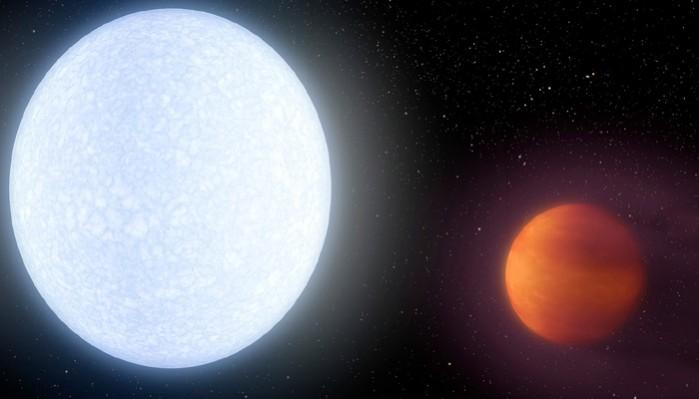
An ultrahot planet has been identified by astronomers about 650 light years from Earth and it has surface temperatures comparable to the surface of the Sun. Its atmosphere is filled with iron and titanium – in gaseous vapour form.
The planet "KELT-9b" is believed to have an average temperature of 3,770 degrees Celsius.
According to the researchers who conducted the study, the planet "KELT-9b" is an "archetype of the class of ultra hot Jupiters that straddle the transition between stars and gas-giant exoplanets. This is the first time that a planet with iron vapours in the air has been found.
The temperature on the planet is so high, that it has no clouds, just a metal-rich atmosphere. The metals exist solely in their atomic form. Iron is the most abundant "transition metal" in the universe, but it has not, till now been observed in an exoplanet because of its refractive nature, say the researchers.
The extremely high temperatures at KELT-9b suggest that its atmosphere is a closed chemical system.
KELT-9b, was spotted in 2017 for the first time by researchers peering into constellation Cygnus, reports CNN. The planet's extreme heat allowed the detection of iron and titanium in its individual atomic form, not bound as molecules with other metals. The intense heat spread throughout the planet's atmosphere means the iron and titanium never condense into clouds. So there is hot iron and titanium simply floating about in the air in this planet.
There is unlikely to be any life on this planet, notes the report and not just because it is unimaginably hot. It is about twice as large as Jupiter and orbits its host star so close that it completes an orbit every one and a half days, as opposed to the just over 365 days it takes Earth to complete a full revolution. Also, its host star is about two and a half times the size of the Sun, and twice as hot.
It is a huge luminous ball of gas that would look white hot with a tinge of blue, notes the report. This strange planet is also going around its star from pole to pole, instead of around its equator, so just about everything related to this star is odd.
Their findings were first published in the journal Nature.

















